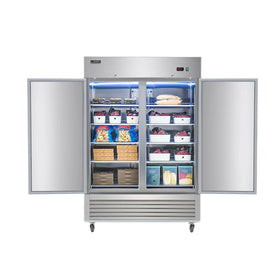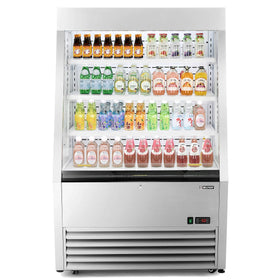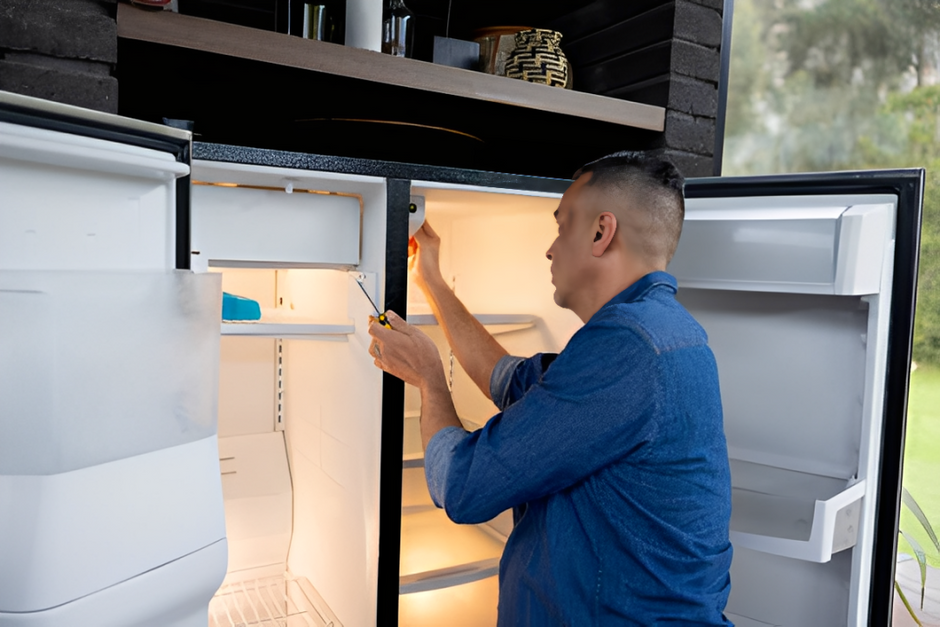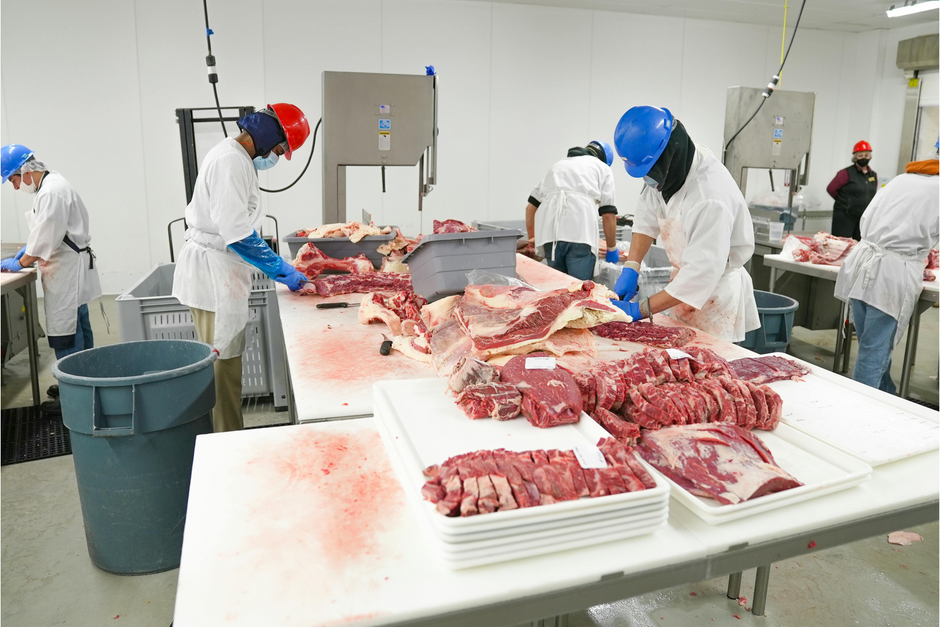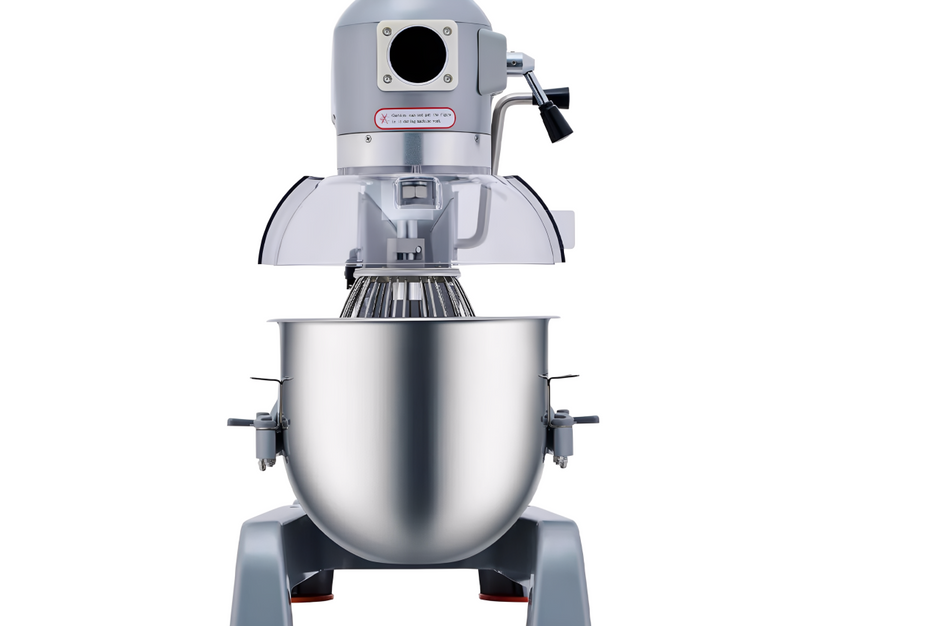To many people, the main difference between a commercial-grade refrigerator and a standard home refrigerator is that one is used in restaurants and grocery stores, and the other is used in home kitchens.
However, there are many technical factors that make a refrigerator a commercial refrigerator, many of which are not as obvious.
For example, commercial refrigerators come with more formidable refrigerants, which enable them to cool much faster, often about 2-3 times quicker than regular refrigerators.
These subtle differences are important for telling whether a fridge is commercial grade or not.
Here are five main factors that make a refrigerator commercial-grade.

1. Commercial-grade Refrigerators are Made of More Durable Materials
The most obvious way of telling a commercial-grade refrigerator from a standard refrigerator is by observing what materials it is made of, both in the interior and exterior.
Regular residential refrigerators are made of painted steel or powder-coated metal for the exterior and plastic or aluminum liners for the interior (ABS polystyrene).
Commercial-grade refrigerators, on the other hand, are made of heavy-duty stainless steel (usually 304-grade or better) on both the interior and exterior.
Stainless steel works best for commercial refrigerators because:
- It is non-durable and resistant to dents, corrosion, and wear and tear
- It is non-porous, making it easy to sanitize
- It is also heat and scratch resistant, good for busy and fast-paced kitchens.
Buying tip:
If you are in the market for a commercial refrigerator to be used specifically inside the kitchen, go for a unit that is made of high-quality stainless steel that will endure the rigors of frequent use.
These commercial reach-in refrigerators are designed for in-kitchen use, and they are covered, both interior and exterior, with high-grade stainless steel for lasting durability and hassle-free cleaning.
You can choose different sizes from 27-inch Commercial Solid Door models to 81-inch Commercial Reach-in models.
Act now as they are now on sale up to 25% off!
2. Commercial Refrigerators Provide More Powerful and Consistent Cooling
A commercial-grade refrigerator is also superior to a standard refrigerator in terms of cooling power and speed. On average, a commercial refrigerator will cool its contents 2-3 times quicker than a standard household refrigerator would manage.

This is because commercial-grade refrigerators use more powerful compressors and fans. Commercial refrigerators use hermetically sealed, high BTU/hour rating compressors (like the Embraco NEK6212Z), which are built for rapid cooling and continuous use.
- Stronger compressors and fans to cool quickly, even with frequent door openings.
- They also maintain consistent temperatures despite heavy use, ambient heat, or door traffic.
Standard residential refrigerators, on the other hand, use compact, energy-efficient compressors like the LG linear Compressor, which are built for light cooling and energy-saving operation.
Buying Tip:
Ebraco compressors are a big green flag when it comes to buying commercial refrigerators.
Wilprep Commercial Display Refrigerators come with a formidable Embraco compressor, combined with natural R290 refrigerant for reliable and eco-friendly operation.
Now on sale up to 28% off, you can choose between single door models, double door and even triple door models to match the size and needs of your business.
3. Larger Storage Capacity and Accessibility
Another major feature that sets commercial-grade refrigerators apart is the superior amount of storage capacity they offer: they are taller, deeper, and usually wider, especially when they come with multiple doors.
On average, a standard commercial reach-in fridge is roughly 1.5 to 2 times larger in internal volume than a standard home fridge, and up to 3 times larger in multi-door or walk-in configurations.
This table shows differences in storage capacity between different types of commercial refrigerators and similar household models:
| Refrigerator Type | Typical Storage Capacity (Cubic Feet) |
| Residential Refrigerators | |
| – Average | 18–26 cu. ft. |
| – Large Models | Up to 30–33 cu. ft. |
| Commercial Refrigerators | |
| – Single-Section Reach-In | 23–30 cu. ft. |
| – Two-Section (Double Door) | 40–55+ cu. ft. |
| – Three-Section Units | 70–80+ cu. ft. |
| – Walk-In Coolers | Start at 100+ cu. ft., often custom-sized |
Even a single-door commercial refrigerator takes up more floor space than a residential model
Buying Tip
Most commercial refrigerators provide enough storage space, but not all are designed to make storage easy.
Whether you are going for a commercial prep-table or undercounter model, the key is to go for one that allows adjustable shelves so you can better organize your food pans, large trays, or bulk goods.
4. More Precise Temperature Controls and Monitoring Features
Commercial refrigerators have significantly more precise temperature control and monitoring systems than residential units.
Commercial fridges offer ±1°F accuracy, faster recovery, and often include digital controls, alarms, and logs.
Residential fridges are sometimes less precise and lack real-time feedback, built more for energy savings and quiet use than rigorous temperature management.
This is because they are often used in the foodservice industry, where temperature precision is critical for food safety, regulatory compliance, and reliable performance under heavy use.

Precise temperature control can be tailored for specific ranges required by food safety regulations (e.g., holding meat or dairy).
Here are 5 temperature controls you will find on a commercial-grade refrigerator that you wouldn't necessarily find on a household fridge:
- Digital temperature controllers: for setting and displaying the actual temperature
- Audible and/visual temperature alarms
- External temperature displays
- Fan delay and defrost controls
- Multi-zone or dual temperature compartments.
5. Better Energy Efficiency vs. Performance Trade-Off
Though it’s becoming less noticeable due to the rise in environmental awareness and green technology, the tradeoff between energy efficiency and performance has long been a key way to distinguish commercial refrigerators from standard household models.
Commercial-grade refrigerators are built for optimal performance in demanding kitchen environments, so they’ve often been viewed as less energy efficient than home fridges, with performance taking precedence.
However, many modern commercial units now carry ENERGY STAR® ratings, helping to reduce operating costs without sacrificing capability.
All commercial refrigerators from Wilprep’s kitchen come with varying certifications from internationally recognized testing institutions like ETL, ETL Sanitation, and DOE.
From larger models to open-air curtain merchandiser fridges, you can rest assured that each unit has been tested by Intertek and meets the applicable Energy Star and CEC standards.
Common Types of Commercial Refrigerators
- Undercounter Refrigerators – Fit beneath counters in kitchens or bars.
- Prep Table Refrigerators – With workspace on top and cooled storage beneath (e.g., pizza prep).
- Display Refrigerators – Glass-front fridges for customer-facing displays in stores.
- Walk-in Coolers – For high-volume cold storage.
Summary
A commercial-grade refrigerator is a robust, efficient, and regulation-compliant unit built to handle the rigorous demands of professional kitchens and businesses. It’s all about performance, durability, and compliance, not just keeping food cold.
You might be interested in this list of the 5 best commercial refrigerators you can afford in 2025.


